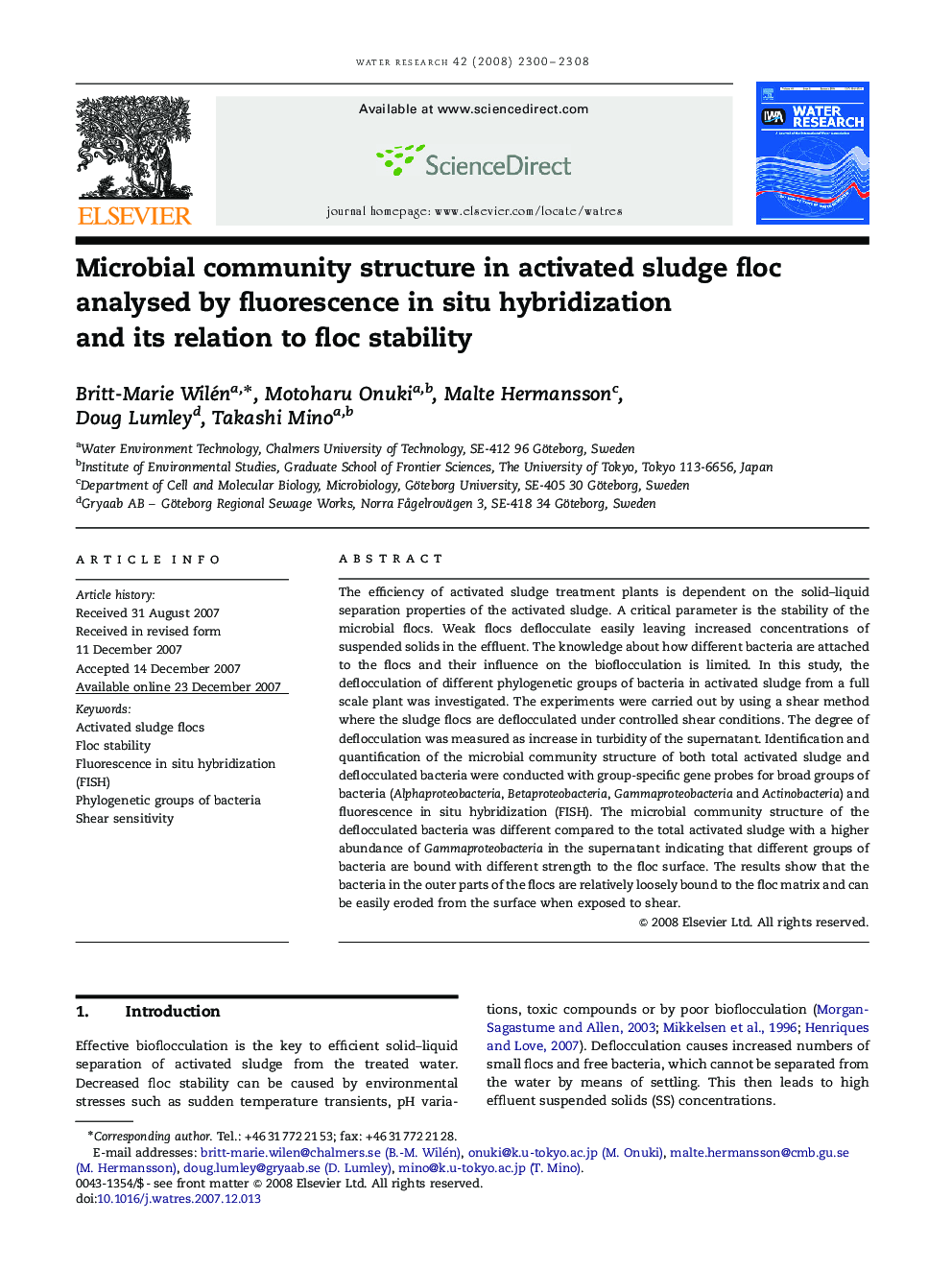| Article ID | Journal | Published Year | Pages | File Type |
|---|---|---|---|---|
| 4484958 | Water Research | 2008 | 9 Pages |
The efficiency of activated sludge treatment plants is dependent on the solid–liquid separation properties of the activated sludge. A critical parameter is the stability of the microbial flocs. Weak flocs deflocculate easily leaving increased concentrations of suspended solids in the effluent. The knowledge about how different bacteria are attached to the flocs and their influence on the bioflocculation is limited. In this study, the deflocculation of different phylogenetic groups of bacteria in activated sludge from a full scale plant was investigated. The experiments were carried out by using a shear method where the sludge flocs are deflocculated under controlled shear conditions. The degree of deflocculation was measured as increase in turbidity of the supernatant. Identification and quantification of the microbial community structure of both total activated sludge and deflocculated bacteria were conducted with group-specific gene probes for broad groups of bacteria (Alphaproteobacteria, Betaproteobacteria, Gammaproteobacteria and Actinobacteria) and fluorescence in situ hybridization (FISH). The microbial community structure of the deflocculated bacteria was different compared to the total activated sludge with a higher abundance of Gammaproteobacteria in the supernatant indicating that different groups of bacteria are bound with different strength to the floc surface. The results show that the bacteria in the outer parts of the flocs are relatively loosely bound to the floc matrix and can be easily eroded from the surface when exposed to shear.
